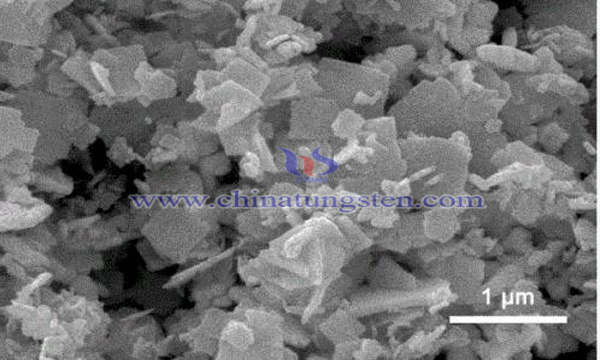Bismuth Tungstate-Polyphenylamine Heterojunction Photocatalyst
- Details
- Category: Tungsten Information
- Published on Tuesday, 28 May 2019 22:18
At present, some new tungstate photocatalytic materials with visible light effect have been discovered by researchers. Semiconductor materials such as tungstate have good application prospects due to their unique structure and physicochemical properties, such as magnetic devices, scintillators, corrosion inhibitors and catalysts, which have become a research hotspot in recent years. For example, the catalytic material Bi2WO6 (band gap is only about 2.8eV), which is faster than the visible light response photocatalysis of TIO2, can mineralize harmful substances such as chloroform and acetaldehyde under visible light, and degrade them into CO2.

However, in addition to its low quantum efficiency, pure Bi2WO6 has low utilization of visible light (about lambda < 400 nm), which limits its application in photocatalysis. In order to enhance the photocatalytic activity of Bi2WO6, bismuth tungstate-polyaniline heterojunction photocatalyst was prepared by in-situ and direct composite methods. The process is as follows:
Bi(NO3)3 with 0.2mol/L and Na2WO4 with 0.1mol/L were mixed with 0.3g surfactant PVP to mix well. Na2WO4 mixed solution was added to Bi (NO3)3 mixed solution, stirred for 1 hour, and NaOH solution was added to the above solution to adjust the pH of the mixed solution to 7. The solution was then transferred to the reactor and placed in an oven at 140 ℃ for 8 hours. After the reaction, bismuth tungstate powder was prepared by centrifugation, washing with distilled water and ethanol for 3 to 5 times and drying at 60 ~℃.
Polyaniline (PANI) of 0.009g was added to N MP (N-methyl pyrrolidone) of 20 mL (PANI, 0.45g/L) and dispersed uniformly by ultrasound for 30 minutes. Then, according to the different quality ratio of PANI/Bi2WO6, Bi2WO6 powder was dispersed in 0.45g/L polyaniline organic solution, ultrasonic for about 30 minutes, stirred for 6 hours, washed and centrifuged, and dried to obtain the final product bismuth tungstate/polyaniline powder. 0.02g bismuth tungstate/polyaniline powder was dissolved in 20mL 10mg/L methylene blue solution. The supernatant was irradiated with lambda=365nm for 2h and centrifuged. The ultraviolet-visible spectrometer was used to test the supernatant after centrifugation. The wavelength ranged from 200nm to 800 nm.
The preparation method of bismuth tungstate-polyaniline heterojunction photocatalyst is simple: raw materials are easy to obtain, easy to operate, and there is no requirement for the pressure of the reaction system. The photocatalytic activity is closely related to the size and morphology of the catalyst. It can be inferred whether the prepared products have good photocatalytic activity, good development potential and market value.
- Tungsten Oxide Manufacturer & Supplier, Chinatungsten Online: www.tungsten-oxide.com
- Tungsten News & Prices of China Tungsten Industry Association: www.ctia.com.cn
- Molybdenum News & Price: news.molybdenum.com.cn
- Tel.: 86 592 5129696; Fax: 86 592 5129797; Email: sales@chinatungsten.com



 sales@chinatungsten.com
sales@chinatungsten.com